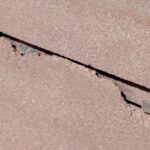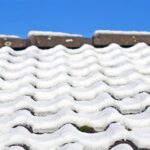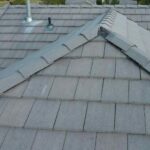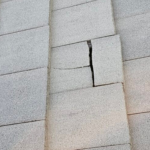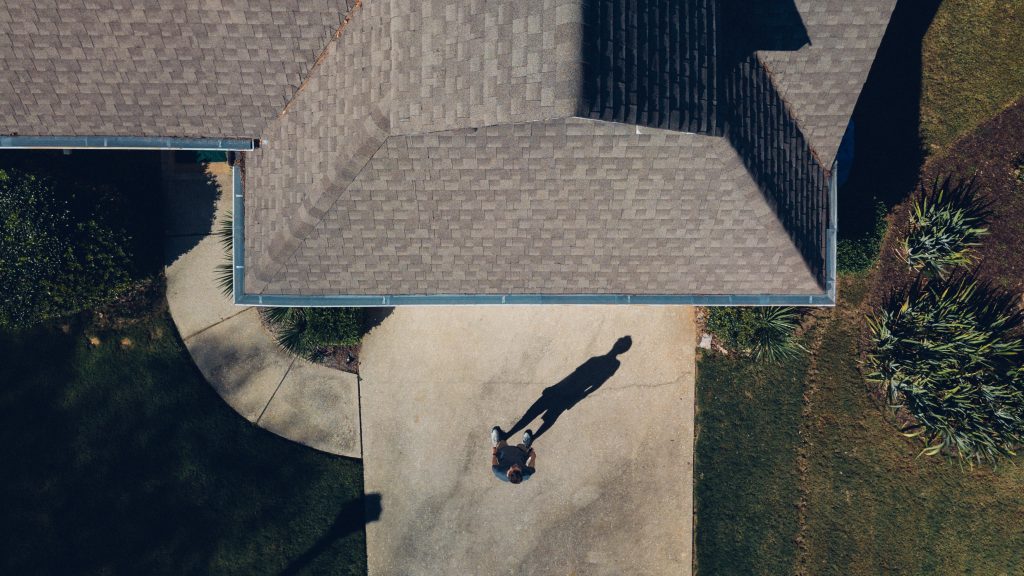
One often-overlooked component of a roofing project is the starter shingles. In order to have a sturdy, reliable roof, it’s essential to consider all aspects of the process, including the materials used. Taking the time to carefully select and install proper starter shingles enhances the foundation, durability, and longevity of your roof, providing lasting protection and peace of mind for your investment.
In this article, I’ll explain what starter shingles are, why they’re important, the benefits of using them, and how to install them correctly.
What Are Starter Shingles?
Starter shingles are a crucial component of any roofing project. They’re the first row of shingles installed along at the edges of the roof, such as the eaves and rakes. They are also commonly referred to as “starter strips”.
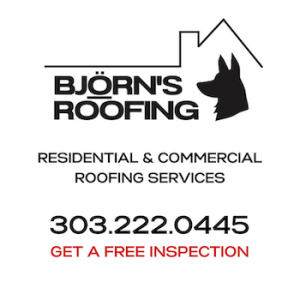
Regular shingles are the main roofing materials installed in overlapping rows to form the outermost layer of the roof. Meanwhile, starter shingles serve as a foundation for the first row of shingles.
Starter shingles establish a solid foundation, stop water from penetrating the roof edges, and guarantee accurate alignment of the shingles. The materials used to produce them are largely the same as those used to make roofing shingles, but they are normally thinner and more flexible, making them less complicated to install and less likely to cause damage to the roof in the process.
Why Are Starter Shingles Important?
Starter shingles are an essential component of any roofing project for several reasons:
- They provide a stronger foundation for the rest of the shingles: Using starter shingles helps prolong the lifespan of your roof.
- They help lower the possibility of shingle blow-off: When the initial row of shingles is not tightly secured to the roof deck, as may happen if starter shingles are not utilized, shingle blow-off occurs. This can result in expensive repairs and could pose a safety risk if roof shingles break off.
- Starter shingles are beneficial for leak prevention: Since they are placed directly on top of the roof deck, they form a barrier that can stop water from seeping into your house.
- Starter shingles help your roof look its best: They add security as well as ensuring that your roof looks neat and professional.
- Protection from Roofing Elements: The bottom edge of the first course of shingles is more susceptible to damage from ice dams, debris, and other environmental elements. Starter shingles add an extra level of security by covering the exposed edge and reducing the possibility of damage.
Types of Starter Shingles
There are several types of starter shingles available, including:
- Traditional starter shingles: These are among the most common starter shingles and are intended to be used with traditional three-tab shingles. They are normally made of the same composition as three-tab shingles and come in a range of colors that match the shingles.
- Architectural starter shingles: These are often wider than traditional starting shingles since they are intended to be used with architectural shingles. To complement the shingles, they come in a range of colors as well.
- Peel-and-stick starter shingles: These starter shingles are self-adhesive and simple to install without the use of roofing nails. Although they are normally more expensive than standard starter shingles, they can save labor expenses and save time.
- Drip edge starter shingles: On top of a drip edge, a metal strip that aids in guiding water away from the roof, drip edge starter shingles are put in place. These are intended to offer additional defense against water damage. They are often more expensive than traditional starter shingles, but they offer superior defense against water damage.
How to Install Starter Shingles
Installing starter shingles is a relatively simple process that can be done by a professional roofer or a homeowner with some DIY experience. Here are the steps to follow:
- Clean the roof deck: It’s crucial to make sure the roof deck is clear of debris before placing starter shingles.
- Cut : Measure the length of the roof edge and cut starter shingles to fit. Starter shingles should be trimmed to fit the length of the roof edge. Starter shingles must to be cut to the same width as the shingles that will be used for the roof installation.
- Install: Starting at one end of the roof, place the starter shingle with the adhesive strip facing up. Nail the shingle to the roof deck using roofing nails. Continue installing starter shingles along the entire roof edge.
- Install first row of shingles: Once the starter shingles are installed, the first row of shingles can be installed on top of them. Follow the manufacturer’s instructions for installing the shingles.
Common Mistakes to Avoid When Installing Starter Shingles
When installing starter shingles, there are some common mistakes to avoid, including:
- Failing to align them correctly: This can lead to crooked shingles and a poorly installed roof.
- Installing them upside-down: They should always be installed with the adhesive strip facing up. Installing them upside-down can lead to leaks and other problems.
- Not using enough roofing nails: It is important to use enough nails to ensure that the starter shingles are securely attached to the roof deck. Failing to use enough nails can lead to shingle blow-off and other issues.
- Not cutting them to the correct size: Starter shingles that are too long or too short can cause problems down the road.
Frequently Asked Questions About Starter Shingles
Here are some frequently asked questions about starter shingles:
Q: Can I use regular shingles instead of starter shingles?
A: While it’s possible to use regular shingles instead of starter shingles, it’s not recommended. Starter shingles are specifically designed to provide a foundation for the rest of the shingles and offer several benefits that regular shingles don’t.
Q: How many starter shingles do I need?
A: The number of starter shingles you need depends on the length of your eaves. Measure the length of the eaves and divide by the length of the starter shingles to determine how many you need.
Q: Where can I buy starter shingles?
A: Starter shingles are available at most hardware stores and home improvement centers. You can also purchase them online.
Q: Do I need to use drip edge starter shingles?
A: It depends on the specific needs of your roofing project. Drip edge starter shingles provide better protection against water damage, but they are also more expensive than traditional starter shingles.
Q: What is the difference between shingles and starter shingles?
A: Shingles are the individual pieces that make up a roof’s outermost cover. They are typically made of asphalt, fiberglass, or organic materials. Meanwhile, starter shingles are thinner and more flexible shingles specifically installed at the roof eaves to provide support and protection to your roof.
Advantages of Shingle Roofs
Shingle roofs are a popular choice for residential and commercial buildings—and for a good reason. It offers numerous advantages, such as durability, affordability, and versatility, that make it a preferred option for many homeowners.
Whether you’re considering a new roof installation or contemplating a roof replacement, understanding the benefits of shingle roofing can help you make an informed decision:
- Durability and Longevity: Shingle roofs can last between 15 and 30 years, depending on the quality of the shingles and the type of installation. Additionally, shingle roofs can withstand harsh weather conditions, such as heavy rain, snow, and wind.
- Cost-effectiveness: They are affordable to purchase and install, and they require minimal maintenance. Additionally, shingle roofs are easy to repair, which can save you money in case of damage. Shingle roofs are also energy-efficient, which means they can help you save on energy costs.
- Environmental Impact: Most shingle roofs are made of recycled materials, such as asphalt and paper, which reduce the amount of waste in landfills. Additionally, shingle roofs are recyclable, which means they can be repurposed into other products at the end of their life cycle.
- Aesthetics: Shingle roofs are available in a wide variety of colors, textures, and styles, making them an excellent option for homeowners who want to customize the look of their homes. Shingle roofs can mimic the look of other roofing materials, such as wood shakes, tiles, or slate, at a fraction of the cost.
Choosing the Best for Your Roofing
With any shingle roofing project, starter shingles are an essential component. By installing starter shingles, you can enhance the overall performance, durability, and protection of your shingle roof.
They contribute to the long-term integrity of the roof system, helping to prevent leaks, wind damage, and other issues that could arise without proper installation. By following the tips in this article, you can ensure that your roofing project is a success.
When exploring the possibilities of shingle roofing for your home or building, consult with a professional roofing contractor like Bjorn’s Roofing to discuss your specific needs and preferences.
Latest Posts
Related: starter shingles, installing starter shingles, installing starter shingles, how much is a bundle of starter shingles, how many starter shingles in a bundle, to install starter shingles, starter shingle how to install, starter shingle roof shingles, starter shingle roll, shingle roof, where do starter shingles go, shingle roof repair, shingles home depot
